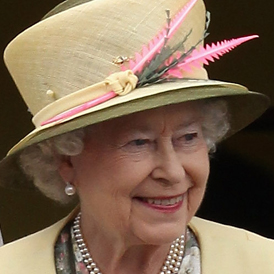Queen visits Ireland’s Croke Park
The Queen has made an historic visit to Croke Park in Dublin. The stadium was the scene of a massacre in 1920 when British troops killed 14 innocent people inside the ground.
Irish President Mary McAleese, who is hosting the visit, was at Croke Park along with a party of schoolchildren, who lined up on either side wearing the colours of Gaelic Athletic Association (GAA) jerseys.
Security was again tight. A group of dissident republicans protested on a street less than a kilometre away, but a heavy police presence made sure they were kept well away from the stadium.
Read more: Queen pays tribute to Ireland's war dead
The Queen heard about the finer points of hurling and football in the stadium changing rooms where she met players. She was particularly interested in the shape of the ash hurley, the wooden stick used in hurling. She asked: “Is it like what they use in shinty?”
At one stage she stood on the touchline at the entrance to the players’ tunnel on the Hogan Stand side and watched a video on a huge screen about the history and playing of the games.

The Artane Band, which provides the music at most major GAA sporting events, played a selection of tunes and afterwards the Queen was shown the GAA’s two most famous football and hurling trophies, the Sam Maguire and Liam McCarthy cups.
The Queen met several senior GAA officials, but a number of others stayed away in protest. Of the nine Ulster counties, just one – Down – was represented.
But the GAA president said the visit would underpin and advance the peace process. He was deeply saddened to attend last month the funeral of a GAA member, PSNI Constable Ronan Kerr.
Christy Cooney said: “I was also very heartened by the utter and united determination of people and political leaders across the island, and across the whole community, to stand together against violence and hatred.”
Mr Cooney vowed the GAA would continue to reach out to unionists.
Addressing the Queen he added: “Your presence does honour to our Association, to its special place in Irish life, and to its hundreds of thousands of members.
“Today will go down in the history of the GAA.”
Empty of people, full of symbolism: Read Gary Gibbon’s blog on the Queen’s Croke Park visit